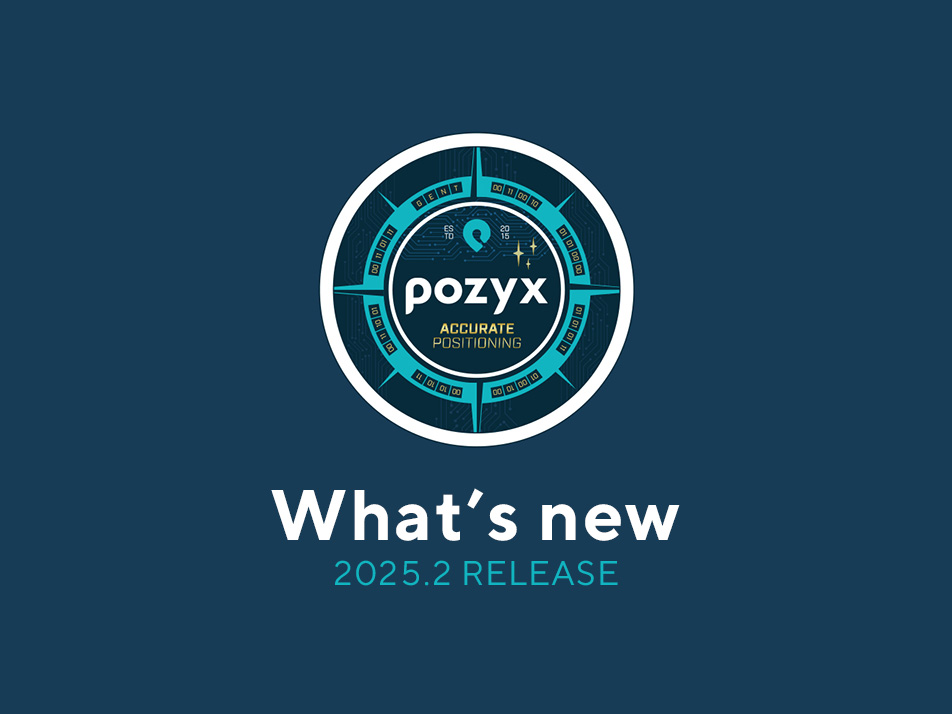 Aalborg University chooses Pozyx UWB RTLS to push industrial automation and AMR development to the next level
Aalborg University chooses Pozyx UWB RTLS to push industrial automation and AMR development to the next level
Aalborg University chooses Pozyx UWB RTLS to push industrial automation and AMR development to the next level
Aalborg University has its 5G Smart Production Lab as a wireless playground for the manufacturing industry. The researchers are using Pozyx’s RTLS (real-time location system) based on ultra-wideband (UWB) technology to create safer and faster Autonomous Mobile Robots (AMRs). As a university spin-off, Pozyx is always pushing ultra-wideband technology forward and fully supports Aalborg’s industrial research lab.
What is an autonomous mobile robot?
An autonomous mobile robot or AMR is any robot that understands its environment and thus does not need a fixed path or to be directly overseen by an operator. To ensure safety without supervision, reactive mobility is needed. The robot needs to be aware of its surroundings and react accordingly. The easiest way to achieve this is to track the robot and the moving objects in its direct environment. Aalborg University started to look into different positioning systems that are accurate enough to support the robot’s fast movements while ensuring the safety of the researchers (and ultimately the operators on the work floor).

What makes Pozyx stand out?
When looking into indoor positioning systems (IPS), Aalborg University considered ultra-wideband, BLE (Bluetooth Low Energy), and computer vision-based systems. They ultimately decided on ultra-wideband.
“Due to its high accuracy, robustness, technical maturity, and cost, we decided to buy an UWB-based positioning system. The Pozyx Enterprise system was the best option among the candidates.”
Allan Schjørring, former research assistant working with AMRs and Pozyx.
Pozyx’s ultra-wideband makes reactive mobility possible by tracking the robot’s position, and the objects and people surrounding the robot in real time. This way the robot can interpret its environment and perform its tasks in the most efficient way possible, navigating around obstructions such as workstations, forklifts, or people.
Real-time tracking with the Pozyx tags can have multiple purposes. It is possible to use the real-time location data generated for the AMR for time and efficiency studies, gaining powerful insights on the processes in the warehouse and optimizing them through the dashboards in the Pozyx Platform.
Stay in the loop!
Stay up to date with the latest Pozyx and Industry news on Real-Time Location Tracking. Don’t miss out! No spam, promise.
Yes, sign me up
Easy and fast deployment
Aalborg University experienced an effortless deployment of the Pozyx System in their 5G Smart Production Lab. According to Allan Schjørring, “The documentation available on the Pozyx website helped us immensely when we planned how to roll out our system. Furthermore, our communication with Pozyx has been great, ranging from emails to online technical meetings.”
The easy deployment and reliable communication also proved itself when Aalborg installed the Pozyx Anchors and experimented in a later stage with a higher number of anchors to cover a larger space with even more accurate positioning.

Test results: robust and accurate solution fit for manufacturing
During the test project Aalborg University reached a median static accuracy of 17 cm by deploying only 8 anchors to cover 560m2. Even without the placement of more anchors to improve the accuracy, Pozyx delivers more precise location data than other technologies such as Bluetooth or WiFi, and it is possible to use indoors and in other GNSS-denied spaces.
“The Pozyx Enterprise solution works great in an industrial environment due to its robustness and high accuracy.”
Allan Schjørring, former research assistant working with AMRs and Pozyx.
The researchers also conducted a study where they directly compared the Pozyx system with an ultrasonic-based solution. Their evaluation concluded that both systems achieved similar accuracy in static conditions, whereas in dynamic conditions, the Ultrasonic system achieved a slightly higher accuracy than the UWB system. Ultra-wideband however is more robust and consistent in results, whereas ultrasonic-based solutions are challenged by complex and dynamic environments due to noise, multi-path propagation, and non-line-of-sight situations.
The 5G Smart Production Lab
The 5G Smart Production Lab is a realistic industrial setting with the objective of investigating how manufacturing industries can benefit from wireless communication, robotics and automation as emerging technologies. To allow research and testing in an environment similar to real life, the lab is provided with realistic industrial equipment such as production lines and robotic arms. Adding Pozyx to the technologies in use, has created a safer and more accurate AMR development environment.
Pozyx, an industry-grade and reliable solution for automation
The 5G Smart Production Lab is not just your average university lab, it simulates industrial environments seamlessly, allowing in-depth testing of realistic operational situations, and pushing industry and automation standards to the next level. In this project, Pozyx proves itself as an accurate and reliable solution, able to support autonomous robots in their movement around a warehouse or production floor. Recently, Pozyx even supports the upcoming industry standard VDA5050 for AGVs and AMRS, to further support AMRs.
Want to learn more about automation, or curious to how Pozyx can transform your business? Request a demo today and talk to our experts.









